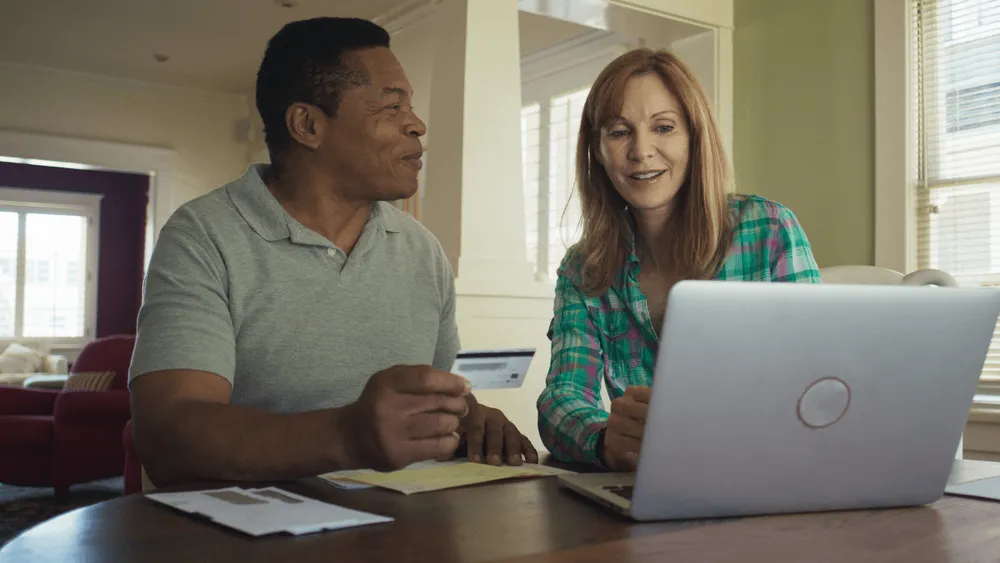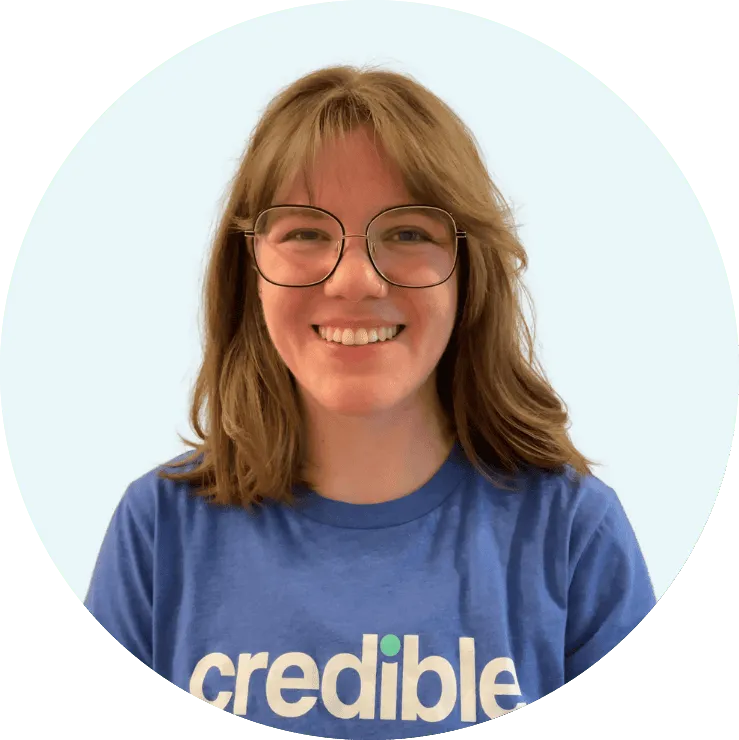How to Pay Off Debt Fast: 5 Strategies
Leverage your existing resources to reduce your debt load asap.

Fox Money is a personal finance hub featuring content generated by Credible Operations, Inc. (Credible), which is majority-owned indirectly by Fox Corporation. The Fox Money content is created and reviewed independent of Fox News Media. Credible is solely responsible for this content and the services it provides.
According to Federal Reserve data, consumer debt is on the rise. Aggregate household debt increased by $212 billion in the fourth quarter of 2023 to an all-time high of $17.5 trillion.
But higher levels of debt can lead to problems - most notably, missed payments and a deteriorating credit score. Paying down debt quickly and effectively takes a multi-pronged approach that often comes down to leveraging your current resources. We'll start with the heavy-hitting strategies first, then the good habits you'll need to not only get out of debt fast, but stay out.
Compare debt consolidation loan rates
Tip
If you can qualify for a lower annual percentage rate (APR), you can use a debt consolidation loan to refinance credit cards and pay them off quicker.
Fox Money rating
Fixed (APR)
6.99% - 25.49%
Loan Amounts
$5000 to $100000
Min. Credit Score
700
Fox Money rating
Fixed (APR)
7.80% - 35.99%
Loan Amounts
$1000 to $50000
Min. Credit Score
620
Fox Money rating
Fixed (APR)
-
Loan Amounts
$2500 to $40000
Min. Credit Score
660
Fox Money rating
Fixed (APR)
8.49% - 35.99%
Loan Amounts
$1000 to $50000
Min. Credit Score
600
Fox Money rating
Fixed (APR)
8.98% - 35.99%
Loan Amounts
$1000 to $40000
Min. Credit Score
660
Fox Money rating
Fixed (APR)
8.99% - 29.99%1
Loan Amounts
$5000 to $100000
Min. Credit Score
Does not disclose
Fox Money rating
Fixed (APR)
8.99% - 35.99%
Loan Amounts
$2000 to $50000
Min. Credit Score
600
Fox Money rating
Fixed (APR)
9.95% - 35.99%
Loan Amounts
$2000 to $35000
Min. Credit Score
550
Fox Business does not make or arrange loans.
1. Determine what you can pay each month
- List all your debts: Get into the details - for each debt you carry, note exact balances, interest rates, minimum payments, and your monthly payment if it differs from the minimum. Then, add up the totals. How much do you owe overall? What is your total minimum monthly payment? You may even want to section by types of debt and average the interest rates you're paying for each. For example, what's the average rate you're paying on your credit cards? This can help you decide which debts to prioritize or consolidate later.
- List essential expenses: Identify and list all your essential monthly expenses, like rent or mortgage payments, utilities, groceries, transportation costs, insurance premiums, and medical expenses. Be thorough in capturing all obligatory expenditures.
- Determine discretionary spending: After listing your essential expenses, assess your discretionary spending habits. This includes nonessential items such as dining out, entertainment, subscription services, and impulse purchases. While these expenses are not mandatory, they can impact your ability to repay debt in a timely manner.
- Calculate remaining funds: Add up your total essential expenses, minimum monthly debt payments, and discretionary spending, then subtract the total from your monthly income after taxes. The remaining amount represents funds available for debt repayment and savings.
2. Consolidate your debt
Essentially, debt consolidation involves taking out a loan to pay off your existing debt, ideally at a lower interest rate. This can speed up your payoff, or lower your monthly payment, or both.
Here's an example of how debt consolidation can work with a personal loan. Let's say you have three credit cards with the following balances, rates, and monthly payments:
After shopping around, you find a personal loan with the following terms:
- Loan Amount: $17,000
- Interest Rate: 15.00% APR
- Loan Term: 3 years (36 months)
With these terms, your monthly payment would increase by about $10 to $589 but you would pay only $4,215 in interest - less than half the amount you would otherwise pay - and you'd pay all your debt off a year sooner.
There are many resources you can use to consolidate debt, depending on your goals and what you can qualify for.
Personal loan
Best if: You can qualify for a lower rate than you're currently paying
A personal loan is a type of unsecured loan offered by financial institutions such as banks, credit unions, and online lenders. Unlike secured loans, which are backed by collateral, personal loans are approved based on your credit profile and income. So, the better your credit score, the better your rate may be. Monthly payments are fixed, and you'd repay your loan over a term of around two to seven years, depending on the lender. Current average interest rates for two-year personal loans are at 12.49%, according to the Federal Reserve.
Keep in mind
Some lenders charge an origination fee that’s deducted from the loan funds upfront. This can range up to 12%, and could affect how much you need to apply for to effectively consolidate. A loan’s APR accounts for the interest rate and any upfront fees.
Many lenders allow you to view an estimate of the amounts, rates, and terms you may qualify for through a process called prequalification. By inputting some personal information, such as your name, date of birth, and Social Security number, you can get a better idea of how much you may be eligible to borrow, and how much it may cost. But prequalification is not an offer of credit, and your final rate may be higher.
Home equity loan
Best if: You have sufficient equity in your home and are comfortable using it as collateral
A home equity loan, often referred to as a second mortgage, is a type of loan that allows you to borrow money using your home as collateral. Like a personal loan, the repayment period and payments are typically fixed, but the repayment term can extend to 30 years, and your home will be on the line if you can't make payments.
To qualify, you should have at least 20% (or more) available equity in your home. You'll also need to pay closing costs, which could be 2% or more of the loan amount, and wait for the loan to close, which could take at least 30 days.
Balance-transfer credit card
Best if: You can qualify for a 0% APR credit card offer and pay down your debt during the promotional period
This is a type of credit card that allows you to transfer existing balances from one or more credit cards. This form of debt consolidation usually offers a low or 0% APR promotional interest rate for a specified period, often ranging from 6 to 21 months. The regular rate kicks back in after that, though, so it's best if you can pay down your debt during that time. Typically, there's a fee (3%-5% of your total) for a balance transfer.
If you can't qualify for a new credit card, check your existing cards for 0% APR balance transfer offers.
401(k) loan
Best if: You can't qualify for a debt consolidation loan
A 401(k) loan allows you to borrow against your retirement savings without a credit or income check. The interest rate is typically 1 to 2 percentage points over the prime rate (currently 8.50% as of May 2024), which may be lower than what you'd qualify for elsewhere, especially if you don't have good credit. And the interest you pay goes into your 401(k) account.
However, you could face steep taxes and penalties if you don't pay the loan back within five years or if you lose or leave your job, and you might lose out on future growth. Check with your 401(k) plan administrator to see if loans are allowed and if you're eligible.
Important
Don’t allow yourself to build up credit card debt again once you’ve paid it off via a loan or balance transfer card. You’ll end up on the hook for your past debt as well as any new debt you create.
3. Build a better budget
If you don't already have a budget, this is a great time to make one (and if you already made a list of your debts and monthly expenses, you have a head start). A budget is simply a way to track your income and your expenses to give you more clarity and control over your spending.
There are many ways to make a budget, from basic to complex. You can print off and fill out a downloadable budget sheet online, or you can use a simple spreadsheet or document. There are also budgeting apps out there, with Mint and You Need A Budget being popular examples.
There's nothing wrong with trying different methods and finding what works for you. Ideally, you'll end up with a way to track your income and spending that can give you insight into how to better manage your money. That insight is crucial when you're trying to pay off debt quickly, because you'll want to seek out ways to cut your expenses and direct that money to your debt payments instead.
Here are some ideas to get you started:
- Find cheaper solutions: For example, if you have a pricey gym subscription, consider canceling it and opting for home workouts instead. If you go to the movies regularly, consider limiting your budget and watching streaming services at home.
- Cut unused subscriptions: Take a look at your account statements for the last month and mark every subscription fee that came through. Evaluate whether or not you really use each subscription enough to justify the cost - and, if not, cut it.
- Eat in: Make a habit of meal planning, grocery shopping, and eating at home to lower your costs.
- Take advantage of free or low-cost services: If you're a big reader, join your local library. If you live in a city with public transit, take advantage of it, or use a ride-share service. Look into what's available in your area that can help.
4. Use debt payoff strategies
When you're paying off debt, there's more than one way you can go about it. Here are some additional debt repayment strategies and how they work.
- Debt avalanche method: This strategy focuses on paying off your debt with the highest interest rate first. Continue making the minimum monthly payment on your other debts, but direct any extra money toward your debt with the highest interest rate. This method can save you the most interest in the long term.
- Debt snowball method: The snowball method focuses on paying down your debt with the smallest balance first and applying that minimum payment onto the next debt's minimum payment, creating a "snowball" effect. By paying off your smallest debts faster, you can get an early win and simplify your debt repayment plan.
- Negotiate debt: Reach out to your creditors with a realistic repayment or settlement plan and explain your situation. Be prepared to be rebuffed (it's a negotiation), so have alternate suggestions. If you prefer to leave the negotiations to someone else, find a local credit counselor through the National Foundation for Credit Counseling to set up a debt management plan.
May result in reduced overall debt owed | May negatively impact credit score temporarily |
5. Increase your income
- Take on a part-time job: Consider finding a part-time job in your spare time.
- Freelancing or consulting: Websites like Upwork, Fiverr, or Freelancer can connect you with clients seeking various skills such as graphic design, writing, programming, or digital marketing.
- Start a side business: Turn a hobby or passion into a side business. Online platforms such as Etsy, Shopify, or social media can help you reach potential customers.
- Rent out property: Consider taking in a roommate or listing a spare room on a site like Airbnb.
- Drive for ride-hailing or delivery services: Consider driving for ride-hailing services like Uber or Lyft, or delivering food through apps like DoorDash, UberEats, or Postmates.
How to pay off debt fast FAQ
Should I focus on paying off credit card debt or student loans first?
It depends, but it's often wise to pay off credit card debt, since it often has higher interest rates than student loans. If you're in particularly dire financial straits, however, keep in mind that credit card debt can typically be discharged in bankruptcy, while the process for student loan debt is much more complicated.
How can I avoid using credit cards while paying off debt?
Find a budgeting strategy that works for you and stick to it - often seeing your spending in black and white is a good motivator to not continue racking up debt. If you still find yourself struggling, consider working with a financial adviser. You can also freeze your cards, but make sure you've removed them as payment options from online vendors.
How can I avoid falling back into debt once I've paid it off?
Getting and staying out of debt requires learning to live within your means and breaking bad financial habits. Consider closing your credit cards if you find not using them impossible, but it may be better to address the underlying issues that cause you to live on borrowed money. Lifestyle changes can be helpful if you're consistently living outside of your means.
Are there any government programs or resources available to help with debt repayment?
While the U.S. doesn't have an all-purpose debt management department, the Consumer Financial Protection Bureau offers a variety of educational resources, including information on what debt collectors are legally allowed to do, what to do if you can't pay your credit card bills, and a guide to student loan repayment. You can also call 211 or visit its website to get connected with programs in your area that may offer additional help.
What are some alternative payment methods to credit cards?
You can use a debit card, cash, or some online payment methods, such as PayPal or Apple Pay, in lieu of a credit card. Instead of using debt, these allow you to use money from your bank account.

